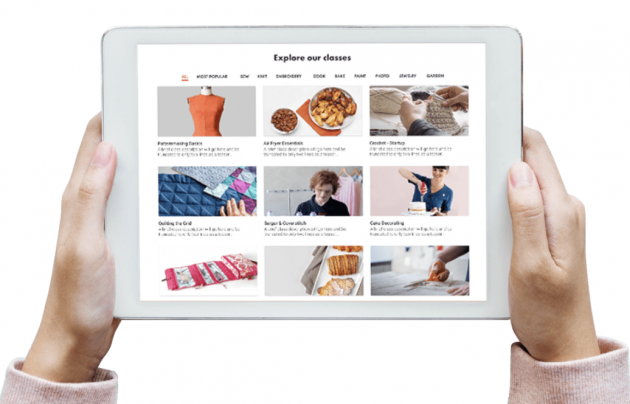
“Well duh, a good backtesting results is when you make 1,000,000% return.”
That's what many new traders think and that's why over 90% of traders fail.
If you want to become a successful trader, you're going to have to learn how properly evaluate a trading strategy and adjust your perception of what is a good backtesting result.
Spoiler alert: Most successful trading strategies start off as mediocre or even poor.
But through continual testing and iteration, they are made into profitable strategies.
Just like successful traders are made, not born…successful strategies require an investment of time and effort.
Where to Start
The first thing to understand about backtesting is that almost all successful trading strategies didn't start out that way.
A great trading strategy is just like any great invention.
It starts with an idea and the inventor wants to solve a problem.
Traders want to solve the problem of making money consistently in the markets.
You will probably have to refine your trading strategy idea to make it profitable.
Once you understand that trading strategies rarely start off as profitable, it then makes sense that breakeven backtesting or slightly profitable results can actually be a good thing.
If a strategy is breakeven (or close to it), then you just might have to do a few tweaks to get it to profitable.
Many times, experimenting with money management or exits can make a strategy profitable.
With that in mind, here are more details on what to look for in your testing results.
Historical Data Used in Backtests
Before I get into analyzing your actual backtesting results, one important thing to consider is how much historical data was used in your backtests.
Many backtesting platforms only give you 1 or 2 years of backtesting data.
This is not nearly enough to figure out how a strategy will perform over different market conditions and cycles.
So when you're backtesting, get as much historical data as possible.
Define a Review Period
Once you have a lot of historical data to test with, be sure to define your review period for your strategies.
If you are creating a strategy on the daily chart, you might want to review the returns on a yearly basis.
Now if you're testing on the 1 hour chart, you should probably review your monthly results.
Then figure out your average return per your review time period.
You probably won't be profitable in every review period, but you want to see what type of drawdowns you'll have to endure and what to expect from the trading strategy.
This analysis will allow you to compare trading strategies in an objective manner and judge which strategies you may want to pursue and which ones to drop.
Set a Goal
Now it's time to figure out what matters to you.
A “good” trading strategy has to be good for you and nobody else.
It won't necessarily be the most profitable or the most consistent.
But if it meets your income needs, then that's all that matters.
A word of caution here…
Many traders (myself included) start out with unrealistic goals for their strategies.
So set a goal, but you might find yourself having to adjust what you expect out of one trading strategy.
You might have to trade several trading strategies or markets to get the results you're looking for.
Don't get discouraged however, if you keep working the results will come.
How to Identify Trading Strategies with Potential
There are 3 basic types of backtesting results:
Terrible Breakeven ProfitableNow I'll define each and show you what to look for in each.
A Terrible Backtesting Result

This one is obvious.
If the strategy loses 80% of the account or more, then you probably shouldn't spend any more time with it.
The strategy above lost 99.82% from 2009 to 2024.
That's as bad as it gets.
Trying to optimize a strategy with a terrible result is like polishing the brass on the Titanic.
It's best to move on and use your time and brain power to create a new strategy.
A Breakeven Backtesting Result

Here's where things get exciting.
Most new traders will throw away a breakeven strategy, but not you because you're reading this article.
A breakeven strategy can potentially be optimized and made much more profitable.
It might just need a tweak or two to work well.
Here are some questions to ask when trying to improve a strategy:
Can you eliminate the biggest losers easily? Do losing trades have a common characteristic? Maybe they go longer than 2 days or they are taken during a certain time of day. What happens if you set a bigger profit target? Can you increase your stop loss, while risking the same percentage of your account, so you don't get stopped out so often? Will using a trailing stop loss improve your results? How do your results change of you increase or decrease your risk per trade? It may be counterintuitive, but lowering your risk per trade can sometimes increase your total return.Those are the major things to consider when trying to improve the performance of a strategy.
But don't stop there, what else can you think of?
A Profitable Backtesting Result

Now we get to the result that everyone is looking for, a profitable result on the first try.
It doesn't happen often, but it is possible.
I've only had a hugely profitable result on the first try…twice.
But even if your results were profitable, you can't stop there.
You need to double check your results.
Real world trading could vary dramatically from backtesting results if you don't account for everything.
Consider the following:
Did you properly account for commissions, spread, slippage and fees? Will you be awake to take trades when they setup? Did you follow the trading plan? Did you run a Monte Carlo simulation to see your maximum potential drawdown?Once you've verified that your results are good, congratulations, you now have a profitable trading strategy.
Now it's time to move on to Forward Testing to be sure it works.
This is a key step to making absolutely sure that your strategy works before risking your full trading capital.
But don't stop there.
Continue to test ways to potentially make your strategy better.
See if you can increase the return or decrease the drawdowns.
Pick the one that's more important to you.
Consider trading 2 or 3 versions of your strategy at the same time to diversify your risk.
Once you're trading your strategy with your full-sized account, then you can repeat the process to find another profitable strategy.
Final Thoughts
Again, you probably won't get a super profitable backtesting result on your first try.
The key is to be able to spot the diamonds in the rough.
From there, you can work on developing each strategy to its maximum potential.
It's also important to be able to figure out which strategies will never work and stop trying to improve them right away.
Remember that trading strategies usually tend to perform a little worse in real life.
So account for that and don't get too excited about a huge return.
Before I go, I'll leave you with a conversation that we had about this topic on the Think Profit Podcast.
It will give you more ideas on what to look for when you're backtesting.
?
The post What is a Good Backtesting Result? appeared first on Trading Heroes.


 6 months ago
11
6 months ago
11 









 Bengali (Bangladesh) ·
Bengali (Bangladesh) ·  English (United States) ·
English (United States) ·